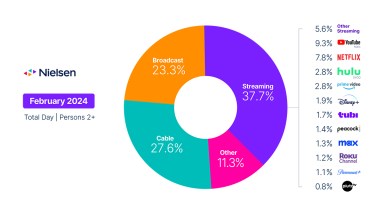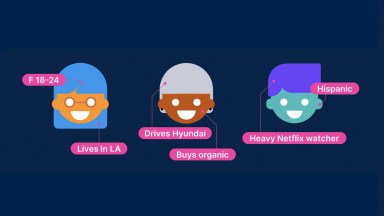
Have you turned on the TV today? What about the radio? You’ve probably used an app on your smartphone. Maybe you bought ingredients for dinner at the store or purchased a new bottle of shampoo online.
All of these activities are simple, everyday actions. But in today’s vast, interconnected and, frequently, digital world, they’re also valuable data points.
Importantly, they can help brands and marketers understand their consumers’ needs, make better decisions to meet those needs and ultimately drive growth for their businesses. But first, brands and marketers need to make sense of all the data.
The size and scope of the data that we all generate in today’s digital age can be staggering, and Nielsen measures a lot of it. Consider this: Nielsen collects 1.7 billion TV viewing records each month, 6.7 billion store transactions each month, and 1.6 trillion online impressions each year! Taking the huge, sometimes messy piles of data generated by our daily actions and organizing them into usable, practical and meaningful information—while also being responsible stewards of data and ensuring people’s privacy—requires specific knowledge and skills.
Fortunately, the burgeoning technologies and platforms that provide new data sources for brands and marketers are also enabling new tools and means to measure and draw insights from that data. It’s the role of data science teams to pursue new data sources and analytical tools that can help parse (and thus make sense of) the Big Data that consumers create. Using scientific methods, processes, algorithms and systems, data scientists are uncovering valuable insights within these snowball sets of data points.
At Nielsen, approximately 1,100 data scientists are tasked with finding sound, repeatable methods of “connecting the dots” for our clients and telling a story about their consumers’ needs. While the “dots” in this analogy represent the seemingly limitless data points available to our clients as they endeavor to understand their consumers, it’s the connections our data scientists are able to generate that are the No. 1 input to our clients’ decision-making and the fuel for their growth.
As a member of Nielsen’s team of data scientists, I work to develop custom solutions to integrate data and create key connections for our clients. These solutions include data fusions, custom audience segmentations, ROI analyses and completely new methodologies to integrate data sources to answer specific business questions about consumers.
There’s no doubt that new technologies and Big Data are revolutionizing how we measure the consumption of media and products that we buy. But it’s also important to remember that they also have their limitations.
Technologies aren’t typically created with measurement in mind. And as a result, Big Data can be biased in many ways. Think about the remote you use to change the channel on your TV, for example. Pressing a button sends a signal to a box, and that signal generates data. But that data is limited in what it can tell about you. For instance, it doesn’t know if you pressed the button or if another family member did. Biased data can lead to erroneous insights about consumers and poor decisions by marketers.
Here’s another example: TV-connected devices and subscription video-on-demand services allow consumers to choose what they want, when they want. But only about 60% of Americans own these devices. As a result, the data from these devices doesn’t represent the entire U.S. population. In addition, these data need to be made comparable to linear TV metrics in order to provide a holistic view of the TV landscape.
At Nielsen, we use panels alongside Big Data to match up data points with real people. A well-constructed panel can eliminate many of the biases inherent in Big Data. For example, we use our U.S. TV panels to statistically represent the country’s population—by age, ethnicity and income level. By combining the insights from these panels with Big Data Nielsen receives from cable boxes thanks to collaborations with cable-provider companies, we’re able to discover who’s behind the remote. Thus, a hybrid measurement approach involving panels and Big Data can provide the granularity and detail of Big Data and offer the bias reduction and representativeness of a panel.
And with the exponentially increasing horsepower offered when we put artificial intelligence (AI) to work, it has never been more critical to ensure data inputs are clean, trusted and representative. A failure to meet this criteria simply means you’re producing higher volumes (thanks to AI) of poor results. It’s important to remember that it’s garbage in, garbage out. So called “good enough” data simply isn’t good enough in an AI world.
Data scientists themselves also play a key role in reducing bias in measurement. While our data science teams do indeed include some very talented statisticians, many might be surprised to learn how diverse our teams really are. Nielsen’s data science teams include associates from varied backgrounds, such as math, behavioral science, chemical engineering, physics, teaching, economics and computer engineering, as well as many others. These varied perspectives help ensure that we consider different points of view in our measurement.
Ultimately, in today’s Big Data world, more and more business disciplines—be they finance, client service, human resources, media analytics, etc.—are evolving to incorporate data science within their respective practices. Empowering more people with diverse backgrounds with the core knowledge of statistical methods, programming and analytical skills opens the door for better decision making across different areas of business today.
I believe this bodes well for the future of data science, provided these new entrants to the field understand the biases and considerations necessary to glean quality insights from within our daily data points.



